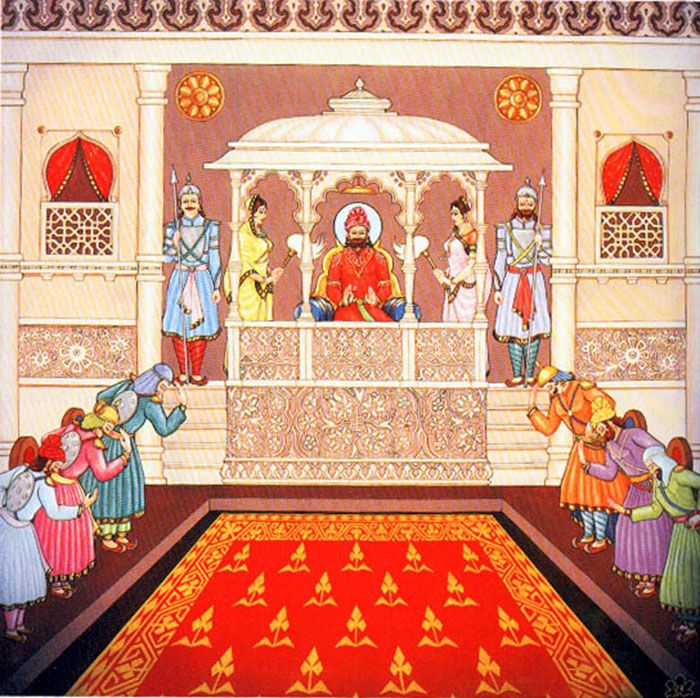Hemchandra Vikramaditya: A Forgotten Emperor Of India
Apr 06, 2019 • 69 views
Hemchandra Vikramaditya, better known as Hemu was the last Hindu ruler of Delhi who had single handedly forced the Mughals to retreat beyond Sutlej. He was the Commander in Chief of Adil Shah Suri, who was the Afghan chief in India from 1554 to 1557. Hemu was an excellent general and had successfully led his armies to victory in 22 consecutive battles.
Hemu was born in a family of humble background and spent most of his childhood in Rewari (present day Haryana). He was not a trained soldier but was well versed in Sanskrit, Hindustani, Arabic and Persian languages. He was a trader who dealt in saltpetre, which was of heavy industrial use in those days and was prominently used in the production of gunpowder which was the fuel for the artillery of the Afghan armies. It was during this time he came in contact with the Afghan officers and soon he was appointed as the Superintendent of the Market of Delhi by Islam Shah, the son of Sher Shah.
Hemu became close to Adil Shah Suri during this time and hence when Adil Shah took over the Afghans after Humayun had forced the Afghan ruler Sikandar Shah Suri to flee Delhi. Adil Shah made Hemu the commander in chief of the Afghan army and Hemu began eliminating Adil Shah's rivals at various provinces and forts from Rajasthan to Bengal. For example, the Afghan rebel Taj Khan Karrani revolted against Adil Shah and declared himself independent. Hemu took the matter into his own hands and decided to teach Taj Khan a lesson. He attacked Taj Khan with his army at the Battle of Chhibramau and the rebel Afghans were slaughtered mercilessly. However, Taj Khan escaped to the Fort of Chunar but Hemu, along with Adil Shah attacked the Chunar Fort soon after and forced Taj Khan to retreat to Bengal.
It was then that Hemu got the news of death of Humayun at Delhi and he immediately marched to Chunar Fort, where Adil Shah had established his court. He expressed his opinion on attacking Delhi at the same time which was criticised by the Afghan courtiers. However, Hemu simply recollected his army composed of Afghans, Rajputs and Brahmins of Uttar Pradesh and Bihar and marched towards Delhi with an aim to drive away the Mughals from India. On his way, he won all the regions where the Mughals had consolidated their positions post Humayun's victory at Delhi. The Mughal generals of Bayana, Etawah, Sambhal, Kalpi and Narnaul surrendered after small fights as they didn't stand a chance to Hemu's army.
In October 1556, the Mughal Governor of Agra fled to Delhi when he heard of Hemu's attack on Agra. However, Hemu was bent on occupying Delhi and driving away the Mughals from India. This made his clash with the Governor of Delhi, Tardi Beg Khan inevitable. Tardi Beg Khan was the best general in Mughal army after Bairam Khan and he attacked Hemu at the Battle of Tughlaqabad.

While Hemu's army was being attacked by the Mughal cavalry from both sides, he ordered an organised retreat which fooled the Mughals that they were being victorious. When the Mughal army was far away from their base where they all couldn't support each other, Hemu charged with his core soldiers who were about 1000 in number and slaughtered the entire cavalry. Tardi Beg Khan saw his defeat and fled to Punjab, where Jalaluddin Muhammad Akbar was being crowned as the Emperor of Mughal Empire, when he had nothing as an empire left.
Hemchandra then took over Delhi and established himself as the Emperor of India with the title of Vikramaditya. It was almost after a century that a native Indian had occupied the throne of Delhi. Hemu died later that year on 5 November, 1556 in the Battle of Panipat about which shall be covered in a future post.
